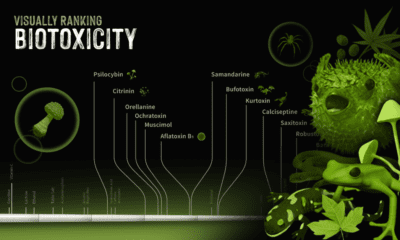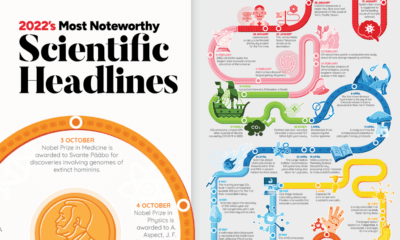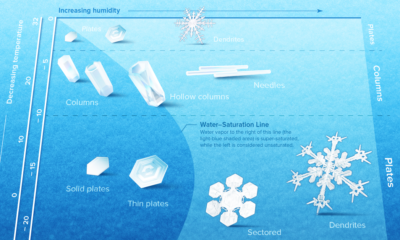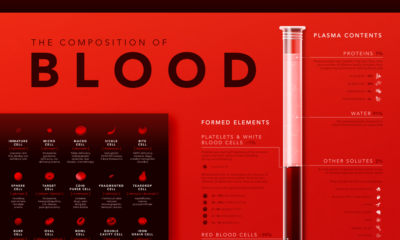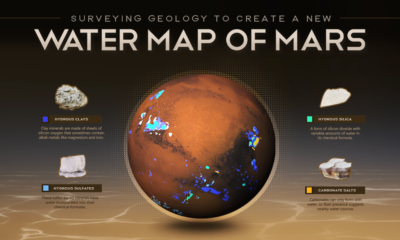In fact, there is no noticeable lag effect at all. That’s because emitted photons travel at 186,000 miles (300,000 km) per second, meaning it takes only 1/500,000th of a second for light to reach even the furthest part of an ordinary room. And, if it could go through the wall, it would orbit the entire planet 7.5 times in just one second.
Light Speed is Fast…
In our every day experiences, we never see light as having to “take time” to do anything. It’s inconceivably fast, brightening up everything in its path in an instant — and with a few odd caveats, scientists believe light speed to be the fastest-known achievable pace in the universe. But what if we get out of our bubble, and look at light from outside the confines of life on Earth? Today’s animation, which comes from planetary scientist Dr. James O’Donoghue, helps visualize the speed of light in a broader context. It helps remind us of the mechanics of this incredible phenomenon, while also highlighting the vast distances between celestial bodies — even in our small and insignificant corner of the solar system.
Light Speed is Slow…
Once a photon is sent into the vast abyss, suddenly the fastest possible speed seems somewhat pedestrian.
Moon: It takes about 1.255 seconds for light to get from Earth to the moon. Mars: Mars is about 150x further than the moon — about 40 million miles (54.6 million km) in the closest approach — so it takes 3 minutes to get there from Earth. Sun: The sun is 93 million miles (150 million km) away, meaning it takes 8 minutes to see its light.
Let that sink in for a moment: the sun could explode right now, and we wouldn’t even know about it for eight long minutes.
Going Further, Taking Longer
If it takes light a few minutes to get to the closest planets, how long does it take for light to travel further away from Earth?
Jupiter: The largest planet is 629 million km away when it’s closest, taking light about 35 minutes. Saturn: The ringed planet is about as twice as far as Jupiter, taking light 71 minutes. Pluto: It takes about 5.5 hours for light to go from Earth to the dwarf planet. Alpha Centauri: The nearest star system is 4.3 light years away, or 25 trillion miles (40 trillion km). Visible stars: The average distance to the 300 brightest stars in the sky is about 347 light years.
If you really want to get the feeling of how “slow” light really is, watch the below video and journey from the sun to Jupiter. It’s done in real-time, so it takes about 43 minutes:
So while light obviously travels at a ludicrous speed, it really depends on your vantage point. On Earth, light is instantaneous – but anywhere else in the universe, it’s pretty inadequate for getting anywhere far (especially in contrast to the average human lifespan). on Even while political regimes across these countries have changed over time, they’ve largely followed a few different types of governance. Today, every country can ultimately be classified into just nine broad forms of government systems. This map by Truman Du uses information from Wikipedia to map the government systems that rule the world today.
Countries By Type of Government
It’s important to note that this map charts government systems according to each country’s legal framework. Many countries have constitutions stating their de jure or legally recognized system of government, but their de facto or realized form of governance may be quite different. Here is a list of the stated government system of UN member states and observers as of January 2023: Let’s take a closer look at some of these systems.
Monarchies
Brought back into the spotlight after the death of Queen Elizabeth II of England in September 2022, this form of government has a single ruler. They carry titles from king and queen to sultan or emperor, and their government systems can be further divided into three modern types: constitutional, semi-constitutional, and absolute. A constitutional monarchy sees the monarch act as head of state within the parameters of a constitution, giving them little to no real power. For example, King Charles III is the head of 15 Commonwealth nations including Canada and Australia. However, each has their own head of government. On the other hand, a semi-constitutional monarchy lets the monarch or ruling royal family retain substantial political powers, as is the case in Jordan and Morocco. However, their monarchs still rule the country according to a democratic constitution and in concert with other institutions. Finally, an absolute monarchy is most like the monarchies of old, where the ruler has full power over governance, with modern examples including Saudi Arabia and Vatican City.
Republics
Unlike monarchies, the people hold the power in a republic government system, directly electing representatives to form government. Again, there are multiple types of modern republic governments: presidential, semi-presidential, and parliamentary. The presidential republic could be considered a direct progression from monarchies. This system has a strong and independent chief executive with extensive powers when it comes to domestic affairs and foreign policy. An example of this is the United States, where the President is both the head of state and the head of government. In a semi-presidential republic, the president is the head of state and has some executive powers that are independent of the legislature. However, the prime minister (or chancellor or equivalent title) is the head of government, responsible to the legislature along with the cabinet. Russia is a classic example of this type of government. The last type of republic system is parliamentary. In this system, the president is a figurehead, while the head of government holds real power and is validated by and accountable to the parliament. This type of system can be seen in Germany, Italy, and India and is akin to constitutional monarchies. It’s also important to point out that some parliamentary republic systems operate slightly differently. For example in South Africa, the president is both the head of state and government, but is elected directly by the legislature. This leaves them (and their ministries) potentially subject to parliamentary confidence.
One-Party State
Many of the systems above involve multiple political parties vying to rule and govern their respective countries. In a one-party state, also called a single-party state or single-party system, only one political party has the right to form government. All other political parties are either outlawed or only allowed limited participation in elections. In this system, a country’s head of state and head of government can be executive or ceremonial but political power is constitutionally linked to a single political movement. China is the most well-known example of this government system, with the General Secretary of the Communist Party of China ruling as the de facto leader since 1989.
Provisional
The final form of government is a provisional government formed as an interim or transitional government. In this system, an emergency governmental body is created to manage political transitions after the collapse of a government, or when a new state is formed. Often these evolve into fully constitutionalized systems, but sometimes they hold power for longer than expected. Some examples of countries that are considered provisional include Libya, Burkina Faso, and Chad.
